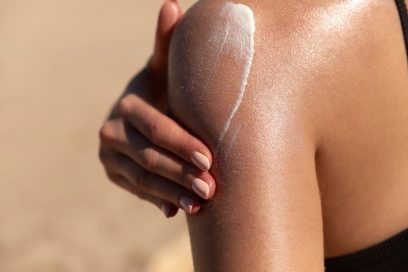Best Shampoo For Keratin Treated Hair In India with 30+ Brands, Online Since 2019 🎉
Sunscreen myths you should stop believing
Sun protection is a must at this time of the year. Our guide to safe sun 101 will answer all your questions about sunscreens.
Most people are familiar with the basics of sun protection. Apply sunscreen daily, reapply regularly, and use a broad-spectrum sunscreen. Even the most experienced skin-setters can fall for common myths that can expose us to sun damage, premature ageing, and increased skin cancer risk (if you’ve ever heard the term “base tan”, keep reading).
- “I don’t have to use sunscreen if I plan on spending most of my day indoors.”
False! False! Two types of ultraviolet light can damage your skin and increase your risk for skin cancer: ultraviolet A (UVA), and ultraviolet B (UVB). Window glass blocks UVB radiation but not UVA. Studies have shown that UVA rays from windows can accelerate skin aging by 5 to 7 years. And, most importantly, it can increase the risk of skin cancer. Sunscreen is an important part of a healthy lifestyle. You’ll also be protected if your sun exposure happens while you are outside.
- “As long I don’t burn, it is okay to have a little color. Sunburn is prevented by a base tan.”
False and totally false! False and really false! Permanent DNA damage causes tanning, similar to sunburn. To prevent sunburn, the immune system sends out repair enzymes to the area of sun damage. The repairs are not always perfect and some damage can lead to mutations in skin cells. These defects, along with previous damage, may prematurely age skin and eventually lead to skin cancer.
- “A higher SPF number allows me to spend more time in direct sunlight.”
If we all used sunscreen according to the instructions, this would hold true. This is difficult to do. The sun protection factor, also known as SPF (or sun protection), is a measure of how well a sunscreen protects the skin from UVB rays. An example: If it takes 20 minutes for unprotected skin’s to turn red, an SPF 15 sunscreen will theoretically stop reddening 15x longer.
SPF is only tested in laboratory conditions under ideal conditions. It’s not applicable to the way most people apply sunscreen. Most people don’t apply enough sunscreen to their skin. It should be two tablespoons for every person. The protection you get is usually much less than the one listed on the product. People who are at higher risk of skin cancer, have very sensitive skin, or who have skin conditions that can make them more sensitive to sunlight may be able to benefit from sunscreens that offer 50+ SPF. No matter the SPF level, sunscreen must be applied at least twice a day and should not be used immediately after swimming or sweating.
- “Sunscreen stops the body from getting vitamin D.”
False. False. Vitamin D is vital for everyone. It stimulates bone growth, supports healthy immune systems, and can help prevent a variety of diseases including osteoporosis. Vitamin D can be obtained from the sun, as well as certain foods and supplements. However, it is best to avoid sun exposure. A recent study has shown that sunscreens don’t prevent vitamin D from being produced. You still get some sun rays, no matter how much or high the SPF.
Vitamin D can be obtained through diet and supplements rather than being exposed to UV rays. There are many good sources of vitamin D, including fat fish, fortified orange liquid and milk. Vitamin D is also found in foods like eggs yolks, beef liver, and cheese.
- “Some sunscreen ingredients can be harmful.”
Most questions about sunscreen safety revolve around oxybenzone. All sunscreen ingredients currently FDA-approved, which includes oxybenzone have been used in India for many years and there is no evidence to suggest that they are harmful to human health.
There are two types of active sunscreen ingredients. Avobenzone and Oxybenzone are chemical ingredients that absorb UV rays and reduce their penetration into skin. Natural inorganic (mineral), physical ingredients such as zinc oxide and titanium dioxide, stay on the skin and reflect UV rays.

It is important to remember that absorption doesn’t necessarily mean toxicity. More research is needed to determine what this means. For those who are concerned about sunburn, they can use physical sunscreens. Pregnant and nursing mothers may wish to use mineral sunscreens.
We encourage more research into sunscreen absorption. However, we recommend that people continue to use sunscreens and complete sun protection. There is substantial evidence that UV exposure can cause skin cancer.
